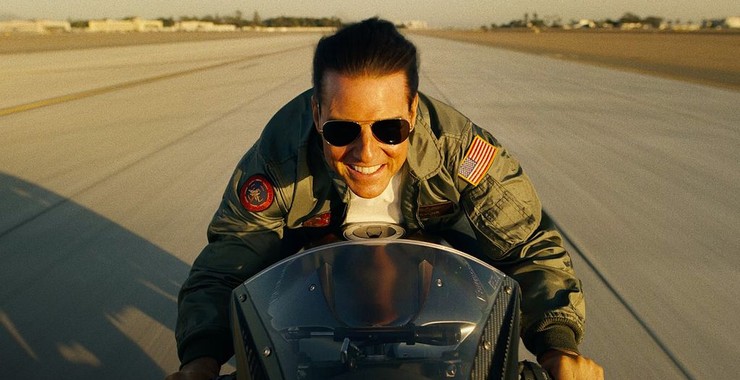
I was going to review Stranger Things Season 4 today but there’s only one problem. I’m still on episode 6 of season 3. I had a brief flurry of motivation to binge the rest of the episodes up to and including season 4, but binging is so 2011. We’ve evolved past that, have we not? I’ll try to watch it all by next week assuming I don’t get consumed by a demigorgan.
Why am I still stuck on season 3, you may ask?
It’s complicated. I’m reluctant to say this because she’s so beloved but I’m kind of creeped out by Millie Bobby Brown. She’s like a 40 year old in an 18 year old’s body, playing a 15 year old. In fact, all the kids are looking a lot older than their TV ages. And this is in Season 3! I can only imagine how they look in Season 4.
You run into this problem when your storyline is continuous from season to season. The kids start turning into gigantic adolescent monsters despite only several days of movie time passing, lol. I full expect that in season 5, Finn Wolfhard will have graying temples and complain of seasonal arthritis.
Check out the stories of Patrick Fugit on the set of Almost Famous. Two weeks would go by and he’d grow 4 inches. So in the first half of a scene he’d be shorter than Kate Hudson, and in the second half he’d be taller.
It was interesting to see where I gave up on Season 3 of Stranger Things, since Netflix remembers exactly where you tuned out. It turned out to be the sequence where that annoying-as-sh%t girl who can’t act kept blabbering on to Gaten Matarazzo. She was it for me. I was like, “I can’t take this anymore. This show is made for 10 year olds.” That bad taste in my mouth prevented me from ever going back.

But when I started it up again, I realized that I like a lot of the actors here, despite Millie-Bobby Brown being 3 years away from receiving social security benefits. I love Gaten. I love Joe Keery, Sadie Sink, David Harbour, Maya Hawke. And the production value is astounding. There was a scene in a supermarket and I noticed that every single cereal box – of which there were 50 different brands – were all 1980s authentic.
The average person doesn’t think about that. But I think about it. It takes a lot of work to pull that off. I heard that Stranger Things currently has the highest budget per episode of any show. I believe it.
Something a lot of people are wondering is, can Stranger Things save Netflix? Season 4 doubled Bridgerton 2’s debut, which was the previous ratings record-holder. It occupies the only IP slot for the streamer that holds ongoing value – that drama/sci-fi genre spritz that geeks become obsessed with.
The reason this matters is because it’s the one area Netflix can’t compete with the studios on since there are puppies who have been around longer than the streamer. If Netflix goes the way of Blockbuster, a lack of IP will be the primary reason. So Stranger Things is valuable to them in that sense. However, it’s not a clear path forward for future stories. The main reason people watch it is because of the chemistry of these kids. As I’ve fastidiously pointed out, they’re not going to be kids for long. And then what?
Netflix’s only other IP plan seems to be to make Knives Out a franchise. Oh Netflix. Oh my poor Netflix. Never ever bet on Rian Johnson. The force will not be with you. But in all seriousness, who tries to make a franchise out of a very specific whodunnit? That’s not going to end well.
Meanwhile, you’ve got Top Gun 2 taking over the world. Some are calling it ‘the perfect movie’ and I know what they mean. They don’t mean it doesn’t have flaws. It means when you imagine going to the movies and having a great experience, Top Gun 2 fits that slot to a T. It’s action-packed. It’s fun. It’s got a movie star everybody loves. It leaves you with an excitement to go out and experience life. It’s the perfect entertainment experience.
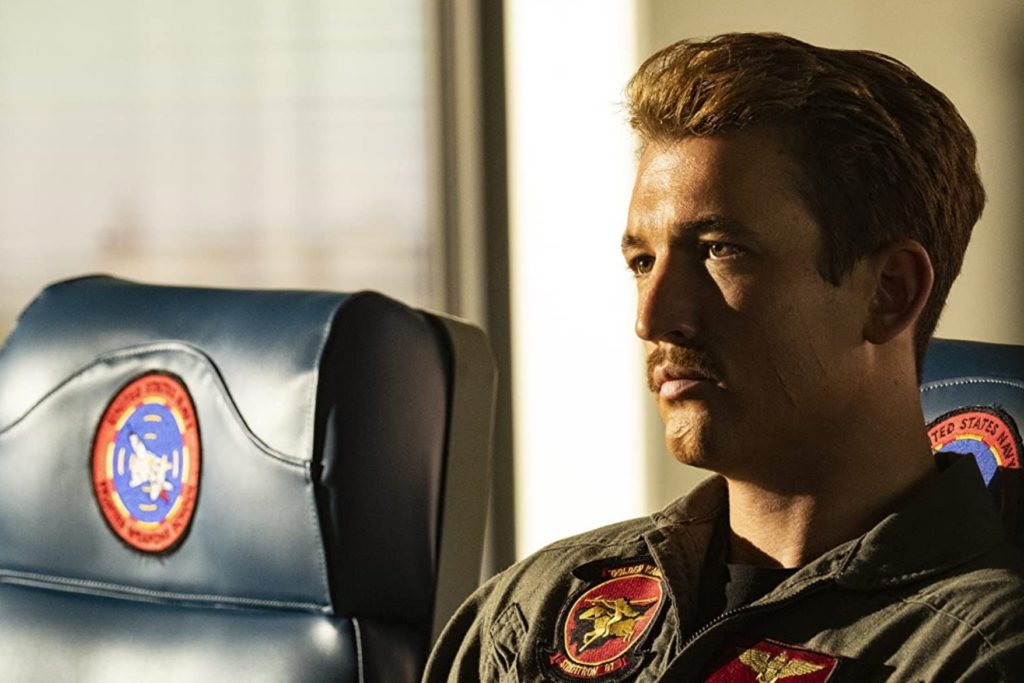
And I know Hollywood loves to get excited about bombs. The sharks get so giddy whenever a highly hyped movie doesn’t perform well. But on the other side of that is how excited they get when they’ve got a hit. The town is so happy. Everybody’s celebrating. Everybody not named Netflix feels good about the possibilities of movies again.
And everyone eats. Joseph Kosinski is now going to become the most desired director in town. Miles Teller’s career has been revived. Tom Cruise is going to be re-courted by the super-franchises, like Marvel, DC, and Fast and Furious.
However, why would Cruise join those franchises when he could just start his own? Yes, Top Gun is about to become a franchise. Should Top Gun become a franchise? Of course not. It’s not built to be one. It’s about jet flying school. What’s the next movie going to be about – parachuting practice?
But the thing is, Top Gun is performing like a mega-franchise film. It’s going to top 1 billion dollars. For those wondering what that means, the last freaking Star Wars movie made 1 billion dollars. You don’t make that kind of money as a producer then waltz off in search of the next Paul Rudd dramedy (no offense to Paul Rudd).
The problem with a sequel to this sequel is that it would barf all over the good will this film garnered. Part of the allure of the film was not seeing Tom Cruise in this role for 30 years. Why then, would we get excited about not seeing him in this role after 2 years?
They could definitely move the starring role over to Miles Teller. I have no doubt in my mind that he would sign for three 20-dollar gift certificates to In and Out. The man was picked to be the next big movie star before making some of the worst career choices in Hollywood history and becoming an afterthought. Then this comes out of nowhere – you bet your a$$ he’d say yes to a sequel.
And you do already have the first sequel storyline ready to go. They want to close down the school for good and focus on unmanned fighters. Rooster has to prove it’s worth keeping manned fighters in service. He goes up against a group of remote desk jockeys piloting their smaller sleeker drone-jets from the safety of a remote facility in New Mexico before taking on Russian drones in a Siberian mission. The story writes itself.
And I suppose there’s no rule that says you have to stay in Top Gun school. So maybe we follow Teller (or other pilots) out on real missions. We’ve definitely got a clear enemy to fight in Russia. So you could have some fun there.
But the franchise would have some uphill battles. Because of Cruise’s star power, none of the other pilots really got a chance to shine. Even Rooster was in the background for most of the film’s first half. So they’d have to build up those pilots and make them worthy of carrying a movie.
But make no bones about it, this is now a franchise. There are going to be many Top Gun films going forward. And I would argue that they should go forward without Cruise. Because the irony is, Cruise’s star power holds everyone else back, which limits the direction the franchise can take. If they want to expand this thing out, we need to see the other characters shine.
And I just don’t see a storyline for Maverick. His storyline in this one was perfect. He was gone for 30 years. He comes back to teach the class. You don’t have that if you pick things up after 2 years. I don’t know. It’ll be interesting to see what Bruckheimer chooses to do. They’ll of course offer Cruise a bajillion dollars because they have to. But they may be better off if he turns them down.
Before I sign out, I have one last thing to share. I saw Ti West’s “X,” the homage to 70s horror flicks about a group of people who head out to a remote cabin to shoot a porno film. The film received a shockingly high 97% on Rotten Tomatoes, which is notorious for hating on horror films. So I figured I was in for something good.
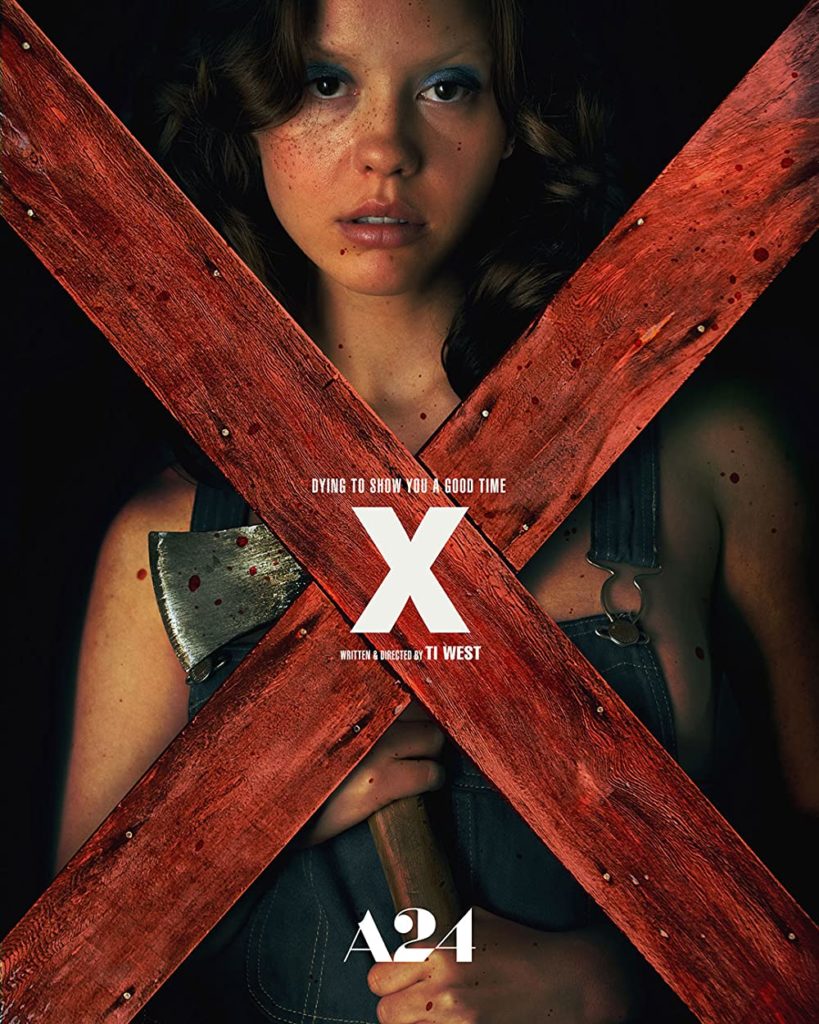
Maybe my expectations were too high but the movie was just too darn silly. It’s about this old couple next door who slaughters our filmmakers. I’m not going to say it’s impossible for two hobbling 85 year-olds to slaughter 5 people between the ages of 20-40. But talk about some suspension of disbelief. At one point, the old man has to stop in the middle of a field to catch his breath from walking uninterrupted for 3 minutes. But killing people? Sure, that takes no effort at all.
The film does try to explore deeper themes about getting older and the loss of one’s sexuality and the effects it has on our psyche. And while it was noble and, at certain points, creepy (the old woman really wants to have sex with someone – anyone), the best scene in the movie was a crocodile chasing one of the porn actresses, which is a scene that could’ve been in any horror movie. The best moments of your movie should be specific to your concept. They shouldn’t be moments that could be in other films.
So it was a [x] wasn’t for me, unfortunately. But I’m not going to hate on you if you liked it. :)
Jurassic World or Stranger Things 4 review next Monday!
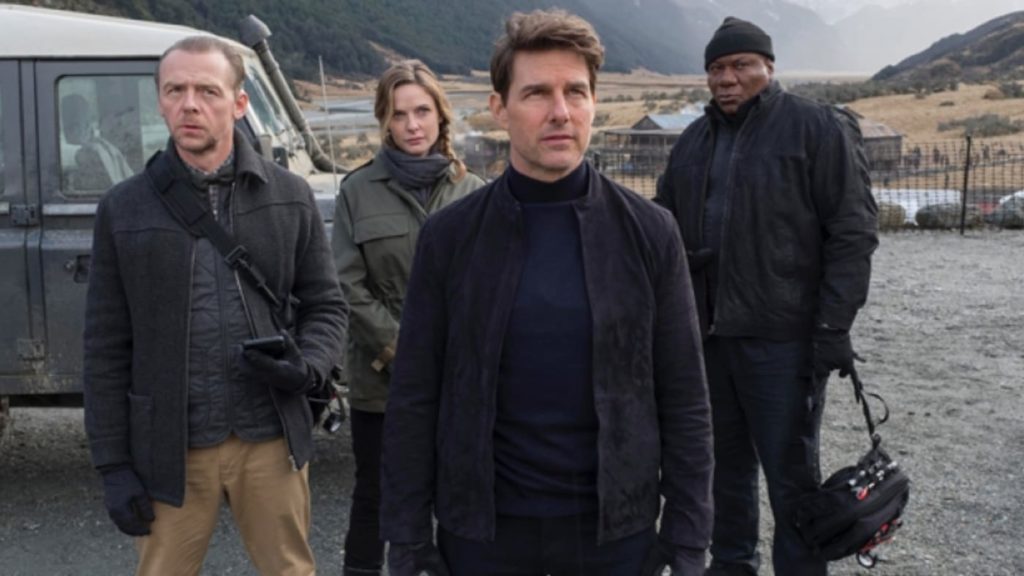 This mission is much easier than you’ve been led to believe.
This mission is much easier than you’ve been led to believe.
We spend an awful lot of time on this site, and in the screenwriting community in general, discussing how difficult screenwriting is. And while it’s important to educate ourselves on the challenges of the craft, you don’t want to get too caught up in the roadblocks preventing us from writing a great screenplay. Us humans are notorious for using the negative aspects of our pursuits to justify not pursuing them.
It’s easy to say, “Well only 1 in a million scripts ever gets made so what’s the point?” And if you take a statement like that at face value, then sure, screenwriting does suck. But that statistic includes the 900,000 screenwriters a year who’ve only ever written one screenplay. The people who read this site are way ahead of anybody who’s only written one screenplay, trust me.
And to be honest, I don’t think there are nearly as many screenplays out there as people think there are. The biggest screenplay contest in the world gets 7000 entries (the Nicholl). And a good portion of those are from writers who entered two scripts. I’m just not convinced that there are that many screenplays to compete with. At least not many scripts from writers who actually put blood, sweat, and tears into the pursuit.
Which is the theme of today’s post.
Screenwriting is easy.
Or, at least, easier than you think.
The perception of any pursuit is influenced by the lens you choose to see it through. Therefore, it is in your best interest to frame things positively rather than negatively. For example, you can say, “It’s impossible to get anybody of influence to read my script.” Or you can say, “It’s 100 times easier to get people of influence to read my script today than it was 20 years ago.”
I remember I actually had to COLD CALL agents to try and convince them to read my script. Think about that for a second. And they didn’t even have managers back then. So you only had half the influential people on the representation side to help. Now you have agents AND managers. You can find most of their e-mails on imdb pro. And you can cold e-mail them with way more efficient and successful results. Don’t even get me started on the perils and expenses of printing hard copies of screenplays and then physically sending them to agencies. You guys should thank your lucky stars that you don’t have to deal with that never-ending sh#tshow.
Also, how many freaking TV shows come out a year? 1000? Back when I was coming up it was like 50. All these shows need writers. You are a writer. The opportunities are so much bigger today than they used to be.
As far as writing screenplays, you can see it as an endless list of beat sheets and writing tools you have to use and writing pitfalls you have to avoid and save the cat scenes and midpoint twists and dramatic irony and dialogue with subtext and, oh my god, make sure your voice is strong… whatever that means.
Or you can see it for what it actually is.
Which is telling a story.
That crazy thing that happened to you that one night in college? That story you love to tell when you’re around a bunch of friends sharing their own crazy stories? That’s all a screenplay is. It’s that. There’s a main character (in this case, you). Something happens to throw him into disarray. He now has to achieve something. A bunch of obstacles are thrown in the way. And then he somehow, against all odds, succeeds in the end.
Treat your script like that. Like you’re telling a real-life story. Then spread out the most exciting moments so that they’re evenly spaced over 100 pages. Then make sure your hero is actively pushing towards his goal in between those exciting moments. No need to overcomplicate it.
By the way, screenwriting is the least demanding art there is. You don’t need to buy anything. You don’t need extra people around. You’re not limited to doing it at a certain time of the day. You can write whenever. I am recalling, in this moment, that Scriptshadow writer who wrote a script ON HIS PHONE while riding the train every day to work.
In all honesty, it felt like a script that had been written on a phone. But the point is, you can write anywhere at any time.
Consider what a director has to do. He has to rent all this expensive equipment and find people to help him. And if he wants to shoot anywhere other than his apartment, he has to get filming permits. And if he wants to do anything even remotely cool, like pull focus, he has to hire an additional person and laboriously prep the shot.
You just have to type FADE IN and then whatever comes to mind.
Oh, and by the way, 90% of the screenwriting page is white. Talk about a forgiving medium. You don’t have to come up with these long thoughtful interesting inner monologues from your main character like novelists do. You just tell us what happens. And, when you’re not telling us what happens, you write dialogue – which, oh yeah, takes you all of three minutes per page when you’re on a roll. If that isn’t easy, I don’t know what is.
I write 1500 words a day here on Scriptshadow. At that rate, I could finish a script in 15 days. 15 DAYS! That could be you. Just match my output here on Scriptshadow and you’re celebrating a new script in less than a month.
But wait. Is writing a script really that easy?
Yeah, it kinda is.
- Spend a week coming up with concepts, pick the best one.
- Center your story around a character with a flaw that’s holding him back in life.
- Come up with 2-5 other characters in your hero’s life he has some unresolved issues with, usually his family.
- Introduce a giant problem in your hero’s life.
- This forces them to pursue a goal.
- Come up with a series of obstacles, both big and small, that get in the way of your hero’s goal.
- Have your hero struggle against his flaw as well as with the people in his life, who he can’t fully connect with until he overcomes his flaw.
- Introduce a few unexpected plot beats that both surprise the audience and add excitement to your story.
- Have your hero seemingly fail, maybe even give up.
- Have them regroup and, in your climax, go up against the antagonist to achieve the goal, at which point they will win or lose, and also finally overcome their flaw.
Doesn’t sound too difficult to me.
Once the script is finished, a lot of writers think, “What do I do now?” So I’ll remind you. You have more avenues to get recognized now that at any other point in history. You have no idea how much a screenwriter felt like an outsider before the Internet. Talk about a true helpless feeling. Back then, the only advice anyone could give to you was, find someone who’s in the industry and get them to read your script.
A lot of good that strategy’s going to do if you live in Germany.
These days, getting repped or getting optioned isn’t hard work. It’s just busy work.
It’s going through all the contests you’re considering entering and picking the ones that are right for your script. It’s going to IMDB Pro and getting e-mail addresses for all the agents and managers and production companies your script seems right for and writing up a simple but compelling e-mail query that highlights your irresistible logline (I consult on e-mail queries for $50 if you want outside help- carsonreeves1@gmail.com).
And then it’s sending your script out to the people who request it. After that, you’ve done all you can for that script. You can be proud of yourself and even if you only get no’s, chances are you’re going to gain a few fans who tell you to send any future scripts into them as well.
If you’re still on one of your first three scripts, you might not get any love yet. That’s okay. Keep at it. You just need to figure out a few of the idiosyncrasies of screenwriting and you’ll be well on your way soon.
The process of screenwriting and getting an agent and getting on the Black List and selling your script and getting your script made – they all seem impossible when you look at them through a macro lens. It feels like there are too opportunities for something bad to happen. Instead of that, just focus on the step in front of you.
That might mean coming up with an interesting main character. Or deciding which contests to send your script to. When you do that, things will feel much easier.
There’s way too much negativity out there. It’s like an evil fog that seduces you. It can provide you with a warm feeling to believe that nothing you do matters and it’s all luck.
I’m all for the occasional pity party. It can be an emotional catharsis that’s required to get back on the horse. But, overall, you should be thinking positively. It’s all in how you frame it. Think about how easy screenwriting is compared to other arts. How much easier it is to write professionally today than it was 20 years ago.
By focusing on the good, you’ll be more driven to write. You’ll feel more like your writing matters. And you’ll be more positive when you pitch people, which in turn will make them more interested in you.
So keep writing everyone. It’s actually quite easy.
Genre: Drama
Premise: (from Black List) Peter, a seventeen-year-old painter, lives with his controlling mother in a lonely house in the wilderness. When he meets a mysterious stranger, he begins to question the reality he was raised to believe, gathers the courage to leave his mother, and unveils the sinister truth behind his upbringing.
About: This script finished with 8 votes on last year’s Black List. The writer has written several short films, which makes this script their big breakthrough.
Writer: Yumiko Fuiwara
Details: 85 pages
 Millie Bobby Brown for our gender neutral mystery forest figure?
Millie Bobby Brown for our gender neutral mystery forest figure?
We’re going from one of the biggest blockbusters of all time to a script you might see Kogonada direct for A24. That’s why I love Scriptshadow, baby. You never know what you’re going to get!
17 year old painter Peter Mori has lived his entire life with his mother, Felicia, out in the middle of the forest. All Peter does every day is paint. And he’s really good at it, even if his paintings are excessively disturbing. Peter focuses on death and fear and evil in his paintings, with a particular love for fire.
Every few weeks, a 70 year old man named Mark shows up to the cabin and collects Peter’s paintings. Mark appears to be some rich dignified aristocrat of sorts. Which is impressive when you consider that society is no more. At least that’s what we’re told.
Things are starting to change for Peter, though. He’s going to be 18 soon, and the implication is that he will make his way into society once he’s a man. This has injected a healthy dose of curiosity in Peter, most of which is aimed towards a big metal door in their home that Peter is not allowed into. Talk about a mystery box.
In addition to this, Peter meets a strange character out in the forest one day. This is the description of the character in the script: “A TEENAGER – about Peter’s age. Gender-neutral. Skinny, a few inches taller than Peter. They wear an oversized hoodie, black jeans and leather boots. They have wild, curly hair that ends just below their ears, and falls over their large, searching eyes.”
Our gender-neutral “teen person” tells Peter that the real world isn’t nearly as bad as his mother has told him. And that Peter should come with “them” and find out for himself. Peter hems and haws over the course of a few meetings with this mystery figure, but finally agrees to run off with them.
A day before Peter plans on sneaking off, he can’t help but be drawn to the steel door that has stood between him and the mystery room his whole life. So he goes inside when his mom is out and finds out the shocking truth about his mother, and by association, him. (Major spoiler) It turns out Peter’s mom was a famous artist in the real world and that Peter’s entire life has been an art exhibit of hers, which she plans to show the world on his 18th birthday. Naturally, Peter decides to get the f$#k out of there. But will the real world be any better than his mother’s fake world?
It’s important to remember that not everything can be ideal screenplay or movie subject matter.
There are certain genres that fit perfectly into each. An action movie, like James Bond, is perfect for film. It celebrates everything the medium is good at. A lean thriller, a la Taken, is perfect for spec screenwriting. The narrative moves quickly and the writing is always sparse and, therefore, easy to read.
But we still need other stories or else the audience gets bored. And today’s script is definitely “other.” I’ve read plenty of scripts about people living in isolated areas. Even scripts about parents lying to their kids’ in these scenarios, keeping the truth of the real world from them.
But I’ve never seen one that evolves like this. And I’m still trying to wrap my head around the big reveal. Cause in scripts like this, where the entire story is screaming, “JUST WAIT UNTIL THE END! EVERYTHING WILL BE REVEALED AT THE END! THE BIG END IS COMING AND IT’S GOING TO BE A DOOZY! JUST YOU WAIT AND SEE WHAT THAT ENDING REVEAL IS!” – the reader will not accept anything other than a perfect reveal.
An argument can be made that everything that needs to be set up in this story could’ve been done so in the first 10 pages. Then the next 60 pages are the story spinning its wheels, getting you all charged for the final reveal, and we get that reveal with 15 pages to go.
While I give the writer credit for a reveal I’ve never seen before, I’m not convinced its worth a 70 page tease. The script is a prime example of a “waiting around” narrative. For those who don’t know what this is, it’s when the characters don’t have a clear goal and are therefore passive. We’re essentially “waiting around” for things to happen *to* our hero as opposed to the hero going out and *making* things happen for himself.
These scripts are not impossible to make work. But they are definitely challenging. And if you’re someone who doesn’t understand the unique challenges of a waiting around narrative, it’s unlikely you’ll pull them off. Because even writers who understand the unique challenges of this template have a hard time making them work.
With that said, mystery is a primary interest-driver in these stories. And the writer does a good job setting up several mysteries. Who is our gender-neutral forest dweller? What’s behind the magical steel door? What is Mark doing with these paintings Peter paints? And just what’s going on in the outside world in general?
Those were just enough mysteries to keep me interested in finding out what happened. I wouldn’t say I was invested, though. And this is one of the issues you run into whenever you write a story with so many mysteries. It’s hard to delve into any character development because every character is a lie. You can’t tell us what’s really going on with them.
We do know, however, that they’re taking advantage of Peter. And that makes him sympathetic enough for you to care what happens to him (readers will always root for characters who are being taken advantage of).
The problem was that you just never had enough gears pushing the narrative along. And so the story felt like a car with only a couple of gears. That led to characters sitting around and being forced to say things that didn’t do much for the story. “Thing is, when I paint I can exist somewhere else… Like, outside of space, and maybe outside of time, even. I’m not here… I’m in a different realm.” This is essentially gobbledy-gook. You don’t want artist characters giving detailed thoughts about their process. It’s never as interesting as the art itself. Just show it through the art. And you don’t want characters offering up unprompted thoughts as a rule of thumb. It comes off as pretentious 99% of the time.
The Fire Outside reminded me of many of the Black List scripts you read today. You can see some talent on the page. But it’s too raw. There’s not enough technique to keep the story compelling from beginning to end.
[ ] What the hell did I just read?
[x] wasn’t for me
[ ] worth the read
[ ] impressive
[ ] genius
What I learned: I’ve pointed this out before. But never have somebody physically push another character down, then have the fallen character bump their head, and either pass out or die. That doesn’t happen in real life. So it shouldn’t happen in the movies.
What I learned 2:
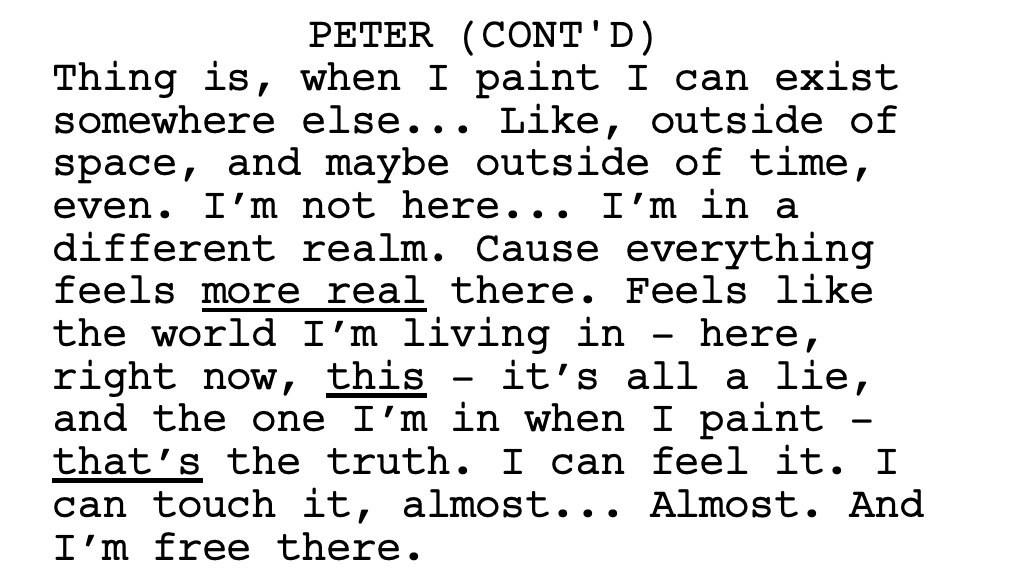
When writing monologues, or any dialogue really, don’t underline a bunch of words for emphasis. First off, it looks like you’re trying to direct the actor’s performances, which actors hate. But it also conveys that you don’t have confidence in what your character is saying. If you have to underline a bunch of words to REALLY EMPHASIZE those moments, it means the dialogue isn’t doing the job on its own. I don’t mind emphasizing a word once every 25 pages or so. Assuming you really need that emphasis to make your point. But don’t don’t do it multiple times in a monologue. Your monologue should speak for itself. And the truth is, it’s highly unlikely those words needed to be emphasized.
The less heralded chipmunk team is back with a tree-climbing vengeance!
Genre: Animation/Family
Premise: Years after the acting duo have split up, Chip and Dale are given a new mission when a friend of theirs mysterious disappears.
About: A lot of people had no idea this movie was even coming down the pipe so imagine their surprise when it not only popped up on Disney Plus, but quickly became the number one movie on the service! Writers Dan Gregor and Doug Mand also wrote Disney’s “Magic Camp” and “Doolittle.” The film is being heralded for its unending number of “holy schnikees” cameos.
Writers: Dan Gregor and Doug Mand
Details: 1 hour and 47 minutes
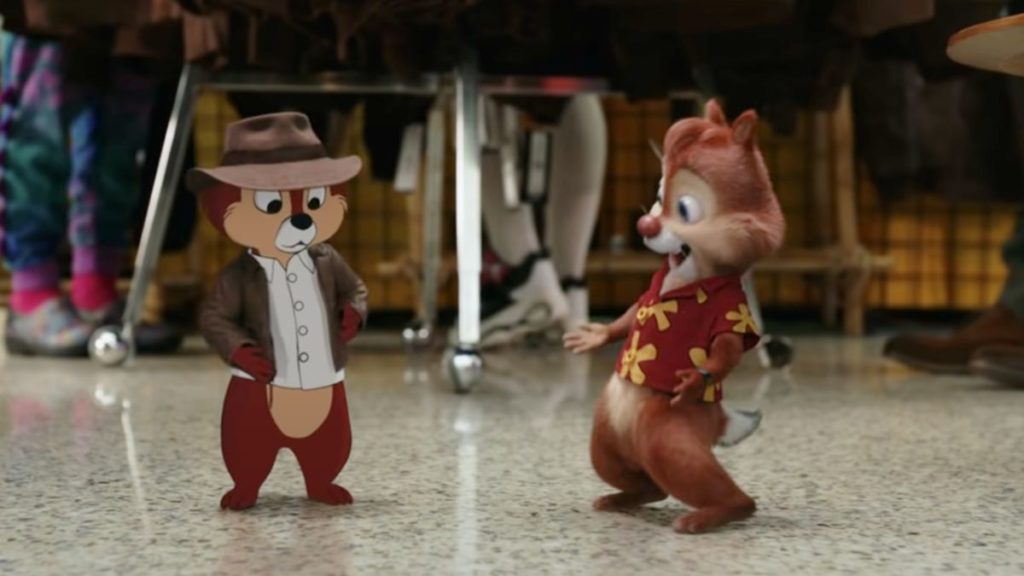
When I heard there was going to be a new Chip n Dale movie I was a little skeptical, with emphasis on the “little” (get it? Cause they’re chipmunks). Those 1980s cartoons with that wacky mini-mammal combo managed to cook up a smorgasbord of shenanigans each and every weekend to the point where I didn’t think anything could top it.
I still remember my favorite tale of them all, season 3, episode 19, “Chips Ahoy?” where Chip n Dale wake up in a cheese factory with amnesia and have to figure out how they got there then fight their way out against an army of rats. Unofficially, that storyline is what inspired Robert Ludlum to write The Bourne Identity.
Now, as we all know, Chip n Dale was famously canceled by controversial TV executive Charles K. Figueroa after he became head of ABC and, in a power move, got rid of all the Saturday morning cartoons on the channel. The creators were so angry about the cancellation that they funded their own episode, titled, “Two Chips and A Miss,” airing it on public TV, which became an instant classic, winning the Clemson Award for best animated episode of television.
While we’re talking about great episodes, how can we not mention…
OKAY!
Okay okay okay.
Enough.
Sorry. It was too tempting to mess with you guys. I had to do it. I know why you’re here. You’re here for…
MOVIE REVIEW – TOP GUN: MAVERICK!!!
Genre: Action/Drama
Premise: Legendary pilot Pete Mitchell is tasked with preparing a new team of Top Gun recruits to pull off a near-impossible mission, a team that includes the son of the man he killed, Goose.
About: They say the movie star is dead. Then how is it that a movie star whose latest movie is built solely around his stardom just made 150 million dollars at the box office, more than double Tom Cruise’s previous movie high? This seems even crazier when you consider that a year ago, Paramount didn’t know what to do with Top Gun: Maverick, as they’d been sitting on a completed film for ages, everyone around them sending their films straight to streaming, and people were questioning whether the theatrical experience was done for anybody outside of Marvel. But Tom Cruise stayed the course, convincing Paramount that this thing was meant to be played in theaters, and boy was he right. This has to be one of the most shocking box office takes in history.
Writers: Story by Peter Craig & Justin Marks. Screenplay by Ehren Kruger, Eric Warren Singer, and Christopher McQuarrie. Characters by Jim Cash and Jack Epps Jr.
Details: 130 minutes
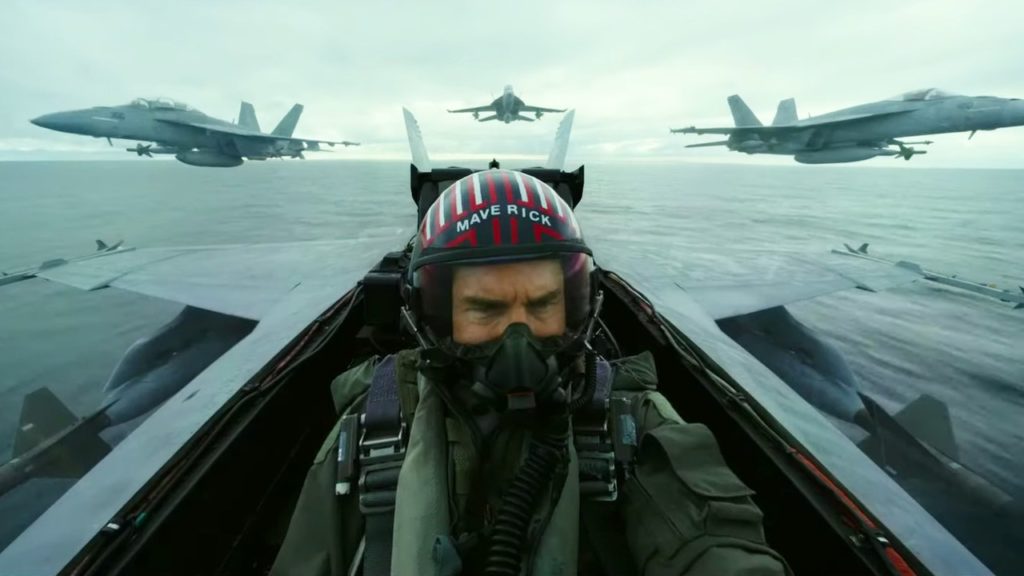
Quick question for the readers. Is this the best long-absence sequel of all time? Usually, these long-absence sequels crash and burn in a fiery blaze of non-glory. Matrix Revolutions, Terminator Dark Fate, Dumb and Dumber Too, Independence Day: Resurgence, T2: Trainspotting, Bad Boys For Life.
Somehow, some way, Top Gun Maverick discovered the formula for coming up with a long-absence sequel story that needed to be told. Remember how I was talking about that in the newsletter? From the second Top Gun Maverick started, with Pete continuing to bump up against his never-ending flaw – his recklessness – you felt like this movie mattered.
With that said, I do think Top Gun Maverick missed a couple of opportunities to elevate this to genius (yes, I said it) status. But even with those near-misses, it’s still the blockbuster movie of the year, leaving all these superhero flicks in the dust.
Full disclosure. The first Top Gun did nothing for me at the time. What I remember about it was the roundhouse high-five, which I practiced way too much with my friends. Then the line, “I feel the need. The need for speed.” I loved saying that line. But other than those two things, Top Gun went right through one eyeball and out the other. I barely remembered anything about it.
So I watched it again in preparation for Top Gun: Maverick and I was shocked by how invested I was. There’s this weird thing with movies where they either work or they don’t work. And you know it within the first five minutes. It just feels like all cylinders are firing. Even movies you don’t personally enjoy, you know if they still “work” as a movie.
The original Top Gun had that feeling. It was so sure of itself. And that made us sure of it. When Goose dies? I was freaking emotional, man. I was like, “whoa, did I not have feelings as a kid? How was I not crying up an ocean when this happened?”
In many ways, Top Gun is the perfect summer movie. It celebrates everything we want out of a summer. We have a girlfriend who lives in a house by the ocean. We play shirtless beach volleyball every day. We drunkenly belt out songs with our buddies at the bar. And wherever we go, we have a light coat of sweat covering us. That movie felt like summer is supposed to feel.
Top Gun: Maverick understands this as well. Which is why it’s debuting on the opening weekend of summer.
If you haven’t seen it, Pete “Maverick” Mitchell test-flies super advanced planes for the military but is told that these programs are shutting down as the military is moving towards drone technology. Luckily, Maverick is called back to the Top Gun flight school to train a bunch of new recruits. Top Gun flight school, by the way, is the school that trains the best of the best.
One of the new recruits is “Rooster,” which is Goose’s son. Naturally, there’s a lot of friction between Maverick and Rooster, as many believe Maverick’s reckless flying style is what led to Goose’s death.
The school turns out to be more important than your average flight school as there’s a uranium rich target from an enemy (they don’t tell us who the enemy is but we assume it’s the Russians) that needs to be taken out within three weeks. Maverick will be tasked with training the students to pull this mission off. Meanwhile, he falls for an old flame who works at a local bar.
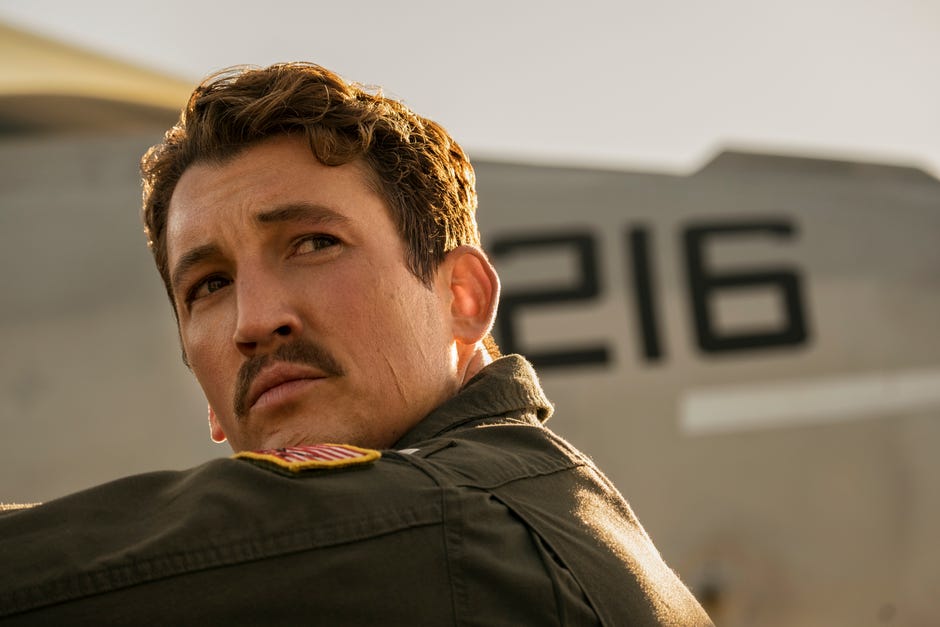
What I loved about this movie is that it understood why the first movie was so successful and embraced it. You have to understand that Top Gun was the pinnacle of the Bruckheimer-Simpson era, where movie producers opened a magazine, looked at the pictures, found something that looked cool and built a story around it. It was a very simplistic way to approach movies, but the good thing about it was that it kept everything simple.
A movie about a best pilot competition at the top flight school is as simple as it gets.
One of the reasons blockbusters feel all over the place these days is because they’ve overcomplicated the storytelling to the point where there’s a million things going on at once. Look no further than Dr. Strange and the Fifteen Other People movie that came out last month. It’s a big cumbersome forest of confusion. I mean do you even remember what the plot was? I don’t.
Top Gun Maverick understands what that does to a movie. It wants you focused instead.
One of the ways they do this is to give us the mission goal right at the start of the film. “We’re going to try and destroy THIS target. And here’s why it’s going to be hard. And that’s why we need to train. Now we’re going to go train.” I actually thought the sequel did it better than the original. If you could nitpick the original, one of the things you’d point out is the low stakes. What happened at the school never felt that important.
The original film rallies at the end by adding a big climax that *does* matter. But we only learn about the mission at the end. Here, we’re told about the big thing they have to do right from the start. So now the training actually seems necessary.
Another way they did a great job was reminding us over and over again how difficult this mission was going to be. They showed us through computer animation just how impossible the job was. This is a great tip for every screenwriter. Tell the reader how impossible it is to succeed at the goal. Really lean into that. Because you want the reader to think, “Oh my God. How are they going to pull this off???”
There’s two major steps in the mission and they even call these steps, “Miracle 1” and “Miracle 2.” So we’re thinking in our heads, “They have to pull off TWO miracles??? Oh my God they’re never going to be able to do that!” Which of course makes us want to watch to see if they can.
I can’t emphasize enough how great of a job the writers (and the director) did at clearly explaining every point of the mission. The reason you do this is so the audience knows exactly what’s going on, which means they’re more engaged.
Once the parameters are clear, you can do things like emphasize how “impossible” it will be to pull the plane up over the enormous slope at the end of the bombing. That way, we’re all anticipating that moment. We’re thinking, oh man, even if they hit their target they still have to shoot up the side of this mountain with no room. That creates anticipation and suspense.
When you’re a newbie writer, you assume the reader and viewer already know those things. So you don’t bother explaining them. Or you barely explain them. Clarity about what your characters have to do is essential to the reader understanding what’s happening. So whether it’s a fighter pilot mission or a bank heist, make sure we know what the characters have to do to achieve their impossible goal.
Another thing I liked was that Maverick’s flaw was the same. Usually sequels suffer because the hero has already overcome their main flaw in the first film. Maverick’s flaw is his recklessness. It’s what got his best friend, Goose, killed. Watching him battle that – does he take it easy or does he continue to push the limits – is what makes his character fun. Top Gun is, arguably, a 2-D movie. So anything you can do to make it a little deeper, helps. And I think Maverick’s flaw of recklessness is what helps this movie feel deeper than it deserves to feel. Which is likely why it resonates with people.
But it’s such a great flaw to play with, regardless, because it’s so visual. Some flaws are hard to show. Like, if your character’s flaw is that he’s an idealist, that doesn’t transfer very well to film. If you have a really talky movie with people sharing ideologies a lot, it could work. But recklessness is this big flashy way to explore a flaw and, for that reason, I’m glad they kept it. We see it right at the beginning – to re-establish that he still has this flaw – when he’s pushing a test plane past its recommended speed (Mach 10), even if it means the plane falling apart.
Let me preface what I’m going to say next with, I think this is a great film. You can nitpick anything. So I don’t have any overwhelming feelings about these missed opportunities. But I do think they could’ve added something to the movie.
First, why didn’t they add a storyline with drones? They tell us right from the start that pilots are going the way of the dinosaur so you think that’s what’s coming – a drone obstacle. But we don’t see a single drone in the movie. I think it would’ve been great if the military was considering going with a drone strike on this target and the flight school was trying to prove that it needed to be a manned mission instead.
I mean how awesome would it have been for Tom Cruise to go up against the newest top level drone being flown by some video game type stud who thinks these old planes are jokes? Seeing Cruise outmaneuver and trick the drone to convince the military to go with them over the drone team would’ve been awesome, in my opinion.
Also, I thought they should’ve done what Cobra Kai did and made all the student pilots a bunch of Gen Z pu$$ies. And Tom Cruise had to knock some old school toughness into them. It would’ve not only been more fun but it would’ve added some personality to the students who were overshadowed heavily by the star power of Cruise. Just a thought.
But other than that, I thought this was the perfect summer movie. It delivered on every level. It actually used its nostalgia for dramatic effect rather than audience applause. It understood exactly what it needed to be and, to use the perfect analogy, it hit the target dead on.
I loved it!
[ ] What the hell did I just watch?
[ ] wasn’t for me
[ ] worth the price of admission
[x] impressive
[ ] genius
What I learned: An old urgency trick is to give the goal an impossible time frame (in this case, they have 3 weeks to train for an impossible mission), then, in the middle of the story, CUT THE TIME FRAME DOWN EVEN MORE. So, at the midpoint, they think they still have two weeks. But then the military receives intelligence that the uranium is arriving sooner than anticipated. Which means they’ll have to fly the mission in one week.
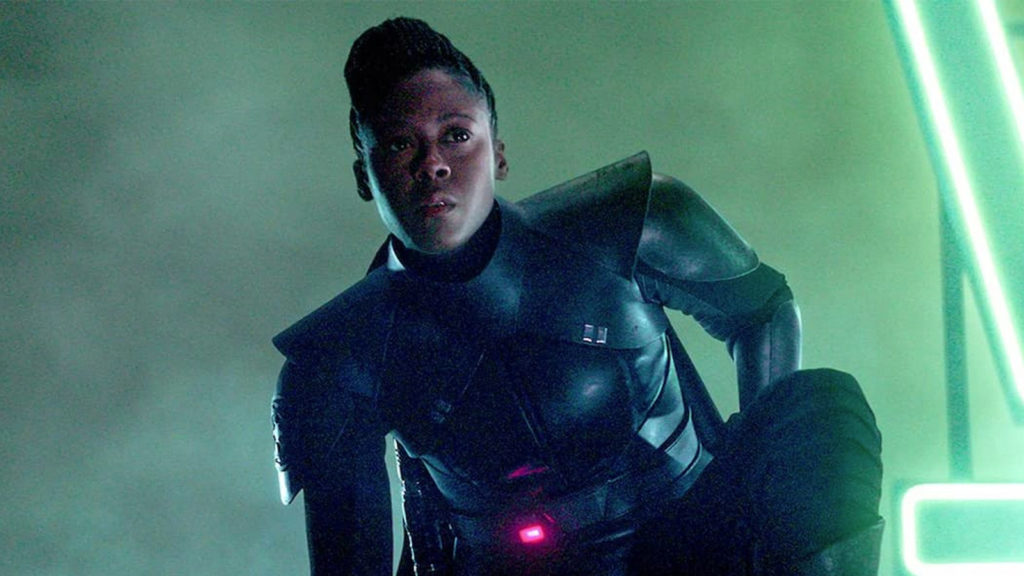
I’ve got a 2500 word Obi-Wan Kenobi review. Yes, I talk all about Baby Leia, Reva, eopies, and the dangers of Dave Filoni having too much creative control over the Star Wars universe. I also dive into the biggest trailer release month of the decade, breaking down Thor, Gray Man, Mission Impossible, She-Hulk, Andor, and more. I also take a trip into the past to see why A New Hope is so much better than the Star Wars content being released today. I come up with some amazing revelations that surprised even me. We’re talking stuff that would turbo-charge the screenwriting world if writers went back to doing it.
If you would like to read my newsletter, e-mail me at carsonreeves1@gmail.com and I’ll send it your way.
P.S. There is no post Monday because it’s Memorial Day here in the U.S. (a big holiday). But I’ll have a Top Gun Maverick review for you on Tuesday. See ya then!

